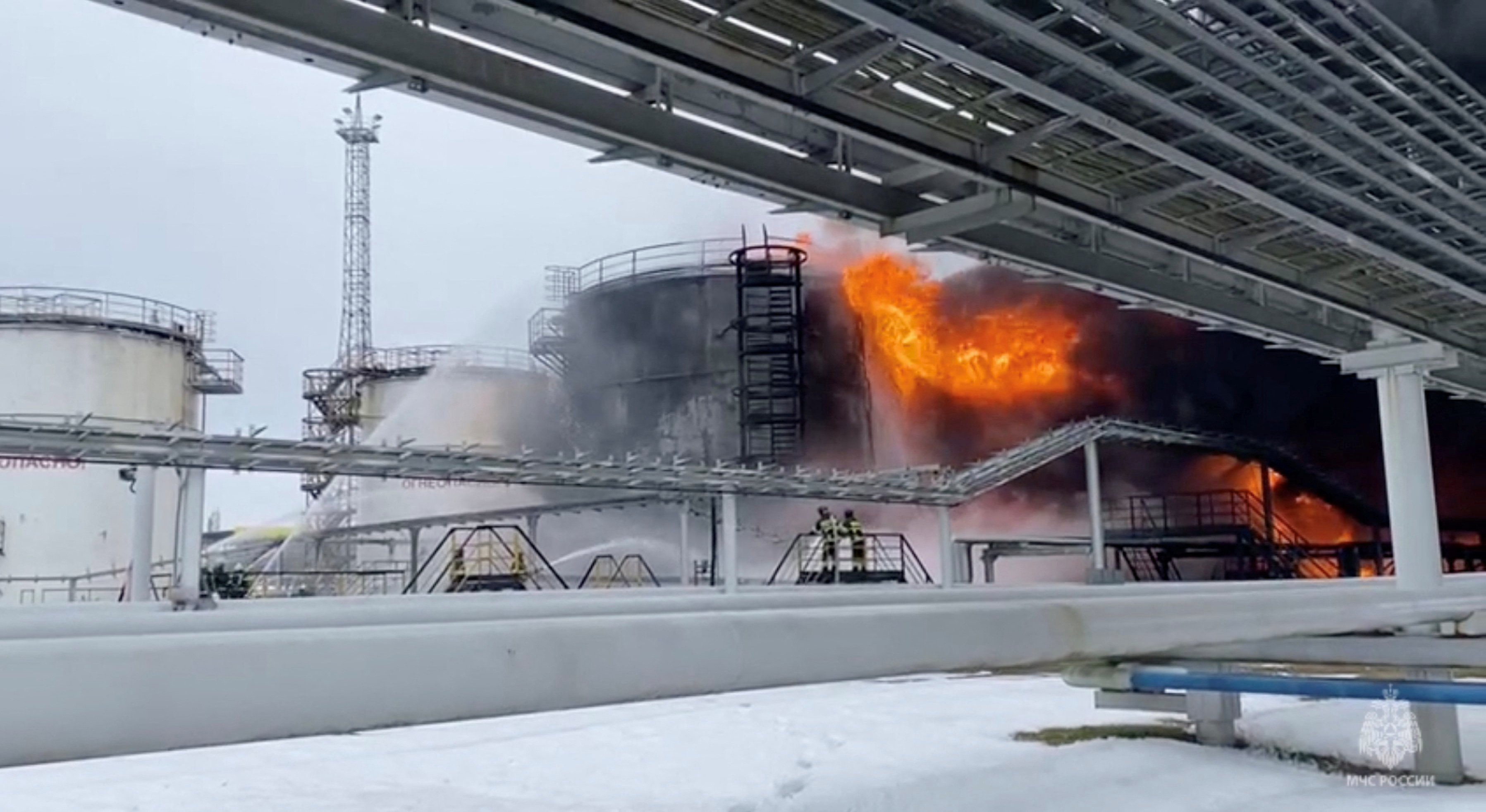
Trump Announces August 15 Alaska Summit with Putin to Broker Ukraine War Ceasefire
The Anchorage Gambit: Trump's High-Stakes Diplomatic Chess Move
ANCHORAGE, Alaska — In the shadow of Denali's peaks, President Donald Trump will attempt what three years of warfare could not achieve: bringing Vladimir Putin to the negotiating table on American soil.
The August 15 summit represents the first face-to-face meeting between a U.S. president and his Russian counterpart since Biden's Geneva encounter in 2021. But this gathering carries unprecedented stakes—not just for the 44 million Ukrainians caught in Europe's bloodiest conflict since World War II, but for global markets increasingly convinced that geopolitical risk has become the new inflation.
Trump's announcement, delivered amid a carefully orchestrated diplomatic offensive, signals a fundamental recalibration of American foreign policy. The president has openly discussed territorial "swaps" that could benefit both Russia and Ukraine—language that has sent shockwaves through constitutional scholars and market strategists alike.
When Geography Becomes Geopolitics
The choice of Alaska as venue reflects more than symbolic proximity to Russia. With Putin operating under an International Criminal Court arrest warrant that effectively bars him from 125 member nations, American soil offers legal sanctuary that few other locations could provide.
The International Criminal Court (ICC) is a permanent tribunal that investigates and prosecutes individuals for the most serious international crimes, like genocide and war crimes. However, its jurisdiction is limited as major powers like the U.S. are not members, and it lacks its own police force, relying entirely on member states to enforce its arrest warrants.
"The logistics alone tell you everything about the constraints we're operating under," noted one senior State Department analyst, speaking on condition of anonymity. "When you have to engineer a meeting around war crimes jurisdiction, you're already acknowledging the fundamental legitimacy questions at stake."
The practical implications extend far beyond diplomatic protocol. Alaska's selection underscores how international law has become both weapon and shield in modern statecraft—a reality that sophisticated investors are pricing into everything from sovereign bonds to commodity futures.
The Secondary Sanctions Sword
Trump's Aug 8 deadline for Russian ceasefire compliance has already triggered market repositioning across multiple asset classes. The administration's threat of secondary sanctions—measures that would target Russia's trading partners rather than Russia itself—represents a quantum escalation in economic warfare tactics.
Unlike primary sanctions which target a specific country or entity, secondary sanctions penalize third parties (like foreign companies or banks) for conducting business with that primary target. This forces entities in other nations to choose between trading with the sanctioned state or maintaining access to the sanctioning country's market, effectively isolating the target from the global economy.
The president has already demonstrated resolve by doubling tariffs on Indian imports to 50% over continued Russian oil purchases, with China explicitly named as the next target. This marks a significant departure from traditional sanctions architecture, which typically focused on direct economic pressure rather than third-party enforcement.
Market participants are parsing the implications with unusual urgency. "We're seeing institutional flows that suggest major repositioning around energy security and supply chain resilience," observed one commodities strategist at a major investment bank. "The secondary sanctions framework essentially weaponizes global trade interdependence."
Energy markets have already begun pricing in supply disruption scenarios. Brent crude futures show elevated volatility around key dates, while tanker rates reflect growing insurance costs for vessels operating in geopolitically sensitive routes.
Historical volatility of Brent crude oil futures, highlighting spikes during geopolitical events.
| Geopolitical Event | Date | Impact on Oil Prices |
|---|---|---|
| Iran-Iraq War | 1980s | The conflict led to a decrease in oil supply as production was disrupted in a major oil-producing region. |
| 9/11 Attacks | 2001 | Immediately following the attacks, Brent crude prices increased by 5%. However, within 14 days, prices dropped by approximately 25% due to concerns about weakening oil demand. |
| Russia-Ukraine War | 2022 | Crude oil prices spiked to over $120 per barrel following the invasion, driven by fears of supply disruptions and sanctions against Russian oil exports. |
| Israel-Iran Tensions | June 2025 | Escalating tensions and threats to the Strait of Hormuz caused global oil prices to surge into the mid-$70s per barrel. |
Constitutional Quicksand in Kyiv
Perhaps the most intractable challenge facing any potential agreement lies not in Moscow or Washington, but in Ukraine's constitutional framework. Article 73 of the Ukrainian Constitution requires a national referendum for any territorial changes—a legal requirement that makes Trump's proposed "swaps" effectively unenforceable without Ukrainian popular consent.
The political mathematics appear equally daunting. After three years of warfare that has claimed hundreds of thousands of lives, the prospect of Ukrainian voters approving territorial concessions to Russia seems remote at best.
"You're asking a nation that has sacrificed everything to legitimize the aggressor's gains," explained one European diplomat familiar with ongoing negotiations. "That's not political realism—that's political fiction."
The disconnect between diplomatic possibility and domestic political reality creates what traders are beginning to recognize as a fundamental mispricing opportunity. Markets betting on durable peace may be underestimating the enforcement and legitimacy gaps that could render any agreement ephemeral.
The Frozen Conflict Hypothesis
Intelligence analysts and market strategists increasingly converge on a "frozen conflict" scenario—a cease-fire that reduces daily casualties without resolving underlying territorial disputes. This outcome would represent partial success for all parties while satisfying none completely.
A frozen conflict is a situation in international relations where active armed fighting has ceased, but no peace treaty or political resolution has been reached to end the conflict. This leaves the underlying political dispute unresolved, often for long periods, with territories like Transnistria in Moldova or the island of Cyprus existing in a state of political limbo.
For Putin, a freeze would consolidate military gains while providing breathing room from Western pressure campaigns that have targeted Russian energy infrastructure with increasing effectiveness. Ukrainian strikes on refineries in Ryazan and other facilities have created structural capacity constraints that secondary sanctions could exacerbate dramatically.

For Trump, even a temporary cessation would fulfill campaign promises while avoiding the massive reconstruction commitments that comprehensive peace would entail. The political optics of "ending" a European war could prove domestically valuable regardless of long-term sustainability.
The European perspective remains more complex. War fatigue competes with precedent anxiety—the fear that legitimizing territorial conquest through negotiation could encourage similar actions elsewhere. Polish and Baltic officials have reportedly begun war-gaming scenarios where frozen conflicts become preludes to renewed aggression.
Market Architecture for Uncertainty
Professional traders are positioning for volatility rather than resolution. Energy markets show particular sensitivity to enforcement mechanisms, with clean tanker rates and refining margins reflecting supply chain fragility that diplomatic headlines cannot immediately resolve.
The sanctions architecture itself has become a tradeable asset class. Financial institutions are pricing compliance costs, insurance premia, and jurisdictional arbitrage opportunities into everything from trade finance to project development timelines.
Currency markets reflect similar complexity. While Central and Eastern European currencies might benefit from ceasefire headlines, the structural economic pressures from reduced Russian energy flows and increased defense spending create countervailing forces that limit upside potential.
Investment Implications: Beyond the Headlines
Forward-looking portfolio construction should account for multiple scenario pathways rather than betting on singular outcomes. The most likely developments suggest tactical rather than strategic repositioning opportunities.
Energy sector positioning benefits from understanding that refinery capacity constraints and shipping insurance complications persist regardless of diplomatic progress. Secondary sanctions targeting Asian buyers could create supply chain disruptions with multi-quarter implications for logistics and commodity pricing.
Defense sector valuations may experience headline volatility, but underlying rearmament trends across Europe suggest multi-year capital allocation cycles that diplomatic developments are unlikely to derail completely.
Defense spending as a percentage of GDP for key European NATO members, showing trends since 2022.
| Country | 2022 (% of GDP) | 2023 (% of GDP) | 2024 (% of GDP) |
|---|---|---|---|
| Germany | 1.38% | 1.57% | 2.12% |
| France | 1.90% | 1.90% | 2.06% |
| Poland | 2.70% | 3.92% | 4.12% |
| United Kingdom | 2.29% | 2.07% | Not available |
Agricultural markets, particularly those dependent on Black Sea shipping routes, remain hostage to enforcement mechanisms that words on paper cannot guarantee. War-risk insurance premia reflect operational realities that outlast ceremonial announcements.

The Anchorage Reckoning
As Air Force One prepares for its northbound journey, the Alaska summit represents more than diplomatic theater. It embodies the collision between geopolitical ambition and economic reality, between constitutional principle and practical compromise.
The markets have already rendered their preliminary verdict: cautious positioning that reflects learned skepticism about sustainable conflict resolution. For professional traders, the Alaska meeting offers tactical opportunities within a strategic framework that assumes continued uncertainty rather than durable peace.
Whether August 15 produces the "pathway" that Trump envisions or the enforcement framework that Ukraine demands, the real test will come in implementation. In an environment where constitutional law, international justice, and market forces intersect with existential national interests, even successful negotiations may prove only the beginning of a longer, more complex resolution process.
Past performance does not guarantee future results. Readers should consult qualified financial advisors before making investment decisions based on geopolitical developments.